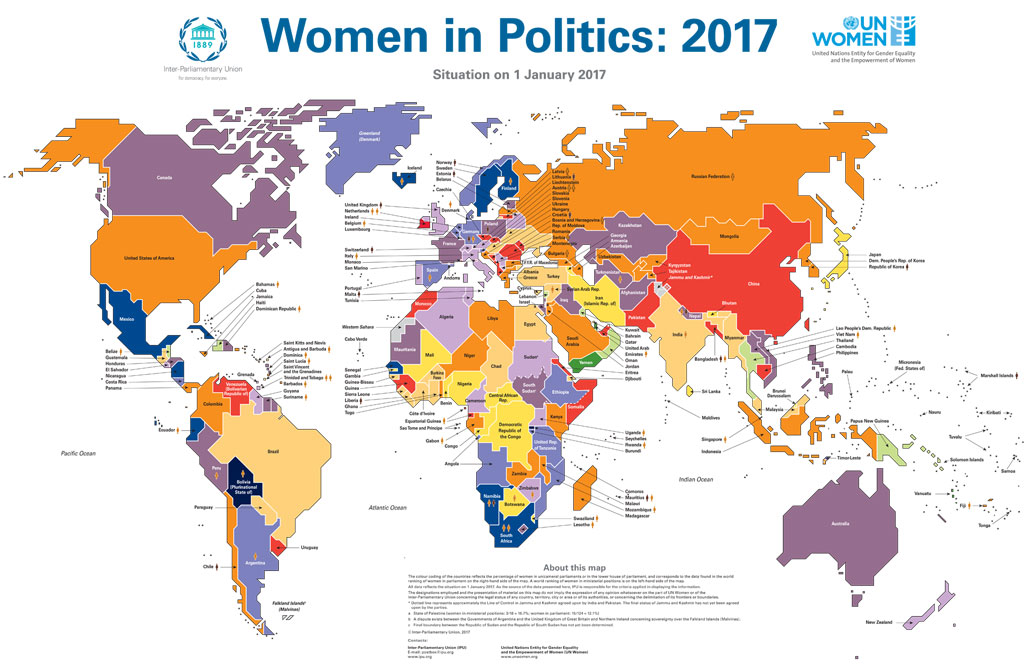Women in Politics Map was launched by the Inter-Parliamentary Union (IPU) and UN Women.
The number of women Heads of State or Heads of Government fell from 19 to 17 since 2015, and progress in the number of women in parliament continues to be slow, according to the Women in Politics Map.
Inter-Parliamentary Union, established in 1889, is the focal point for world-wide parliamentary dialogue and works for peace and co-operation among peoples and for the firm establishment of representative democracy. The IPU supports the efforts of and works in close cooperation with the UN on relevant objectives.
IPU data shows that the global average of women in national parliaments increased just slightly from 22.6 per cent in 2015 to 23.3 per cent in 2016. The number of female Speakers of the House, however, is up to the highest so far, with 53 out of 273 posts.
Women’s participation in parliaments rose to 25 per cent from 22.4 per cent in 2015, even as the region saw a drop in Heads of State with the Presidents of Brazil and Argentina leaving office.
Female ministers in Africa saw a decline in numbers, after years of steady growth. About 19.7 per cent of the region’s ministerial posts are held by women.
In Asia, women hold 11 per cent of ministerial posts, led by Indonesia whose Government is comprised of 25.7 per cent women.
Among the Arab States, 9.7 per cent of senior executive posts are held by women, led by Tunisia and the United Arab Emirates, at 23.1 per cent and 26.7 per cent, respectively.
In Europe, the total percentage stood at 22.5 per cent. A surprise came from the Nordic countries which have traditionally led the global stage in politics, but whose number of female ministers fell by more than six per cent to 43.5 per cent.
Map was launched on the sidelines of the 61st Commission on the Status of Women, known as the largest inter-governmental forum on women’s rights and gender equality. The theme this year is on women’s economic empowerment in the changing world of work.
A common theme throughout the Commission has been the gender pay gap. Women on average are paid 77 cents for every one dollar earned by a man.


